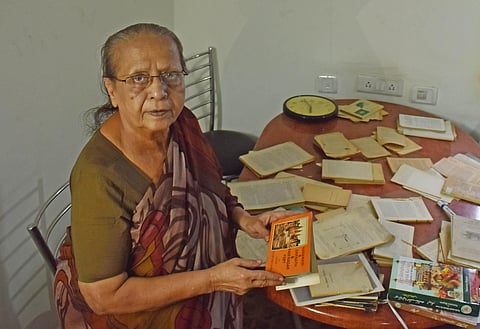

HYDERABAD: A research degree in Urdu, immeasurable knowledge about the Deccani fiefdom and a never-ending love for Hyderabad makes scholar Oudesh Rani Bawa the true epitome of Hyderabadi culture and heritage.
She starts recalling interesting snippets about her Kayastha lineage and her life in Old City in her younger days before independence.
“Kayasthas were the administrative class in any monarchy. After being loyal confidantes to the Nawabs in Azamgarh, my great-grandfathers had moved to Hyderabad due to matrimony and started serving the Nizams. My father Mahboub Narayan also worked in the court of Mir Mahboub Ali Pasha or the sixth Nizam and I grew up in a joint family,” says the Urdu scholar.
She chuckles at how Islamic names were quite common in the higher Hindu communities as well.
“Hyderabad flourished greatly under the rule of the sixth and the most favorite Nizam, Mahboub Ali Pasha who was believed to be an incarnation of Lord Krishna by the Hindus in the city. Many were named after the Nizam kings. He ruled for 27 years and this was the Most Romantic Era of Hyderabad’s history.
We have grown up in an extremely secular environment without any sort of religious discrimination,” recalls the octagenarian.
After completing her education in Urdu, Rani had done her masters in Russian at the Moscow Open University and had been a translator at the Hindustan Aeronautics limited.
She had worked at the Salar Jung museum for a brief period before joining the National Council of Educational Research and Training (NCERT) as a senior Urdu lecturer where she stayed until she retired.
“I inherited my love for Urdu and Persian from my father and went on study Urdu literature and poetry. Arts and artists flourished greatly under the rule of Nizam. However, the economic condition was consistently bad until Salar Jung I was appointed as the prime minister. Hyderabad saw glorious days during this period. The economy boosted under Salar Jung’s advise and the Nizam also set up the Osmania University which was the first-ever university to be set up in mother tongue,” says the history patron.
She fondly recalls the days when the reigning Nizam would cross the streets to go to Mecca masjid for prayer every Friday in his expensive vintage cars (that are still on display at the Chowmahalla palace) and the general public would pave way for him.
“The city was beautifully planned and there were more than a thousand devdis spread around charminar. Devdis are palaces built on small areas of land for the higher officials in the court. There are some devdis still left but many of them got demolished in family disputes. These historic buildings are huge reminders of the glorious past of this city. They celebrate the unity and beautiful coexistence of people that lacks in today’s times,” says the columnist.
After retiring as a senior lecturer, Rani wrote a column every Thursday about Hyderabadi history, anecdotes, political conditions and such for a city Urdu daily.
She now plans on renovating the private library she set up with her husband at their residence in Banjara Hills.
Her husband, Dr. Vasant Bawa is a historian himself who has published several books on the Nizam history.